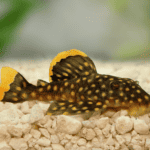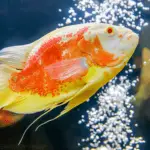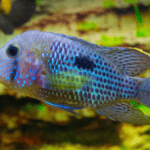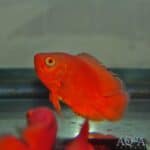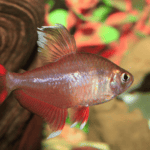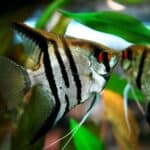Plecostomus, also known as common pleco, janitor fish, spotted pleco, sucker fish, suckermouth catfish, or sucking catfish, is a silurid ray-finned fish native to tropical northeastern South America. It has been introduced to several countries worldwide and is popular in the aquarium trade in Singapore and Hong Kong.
Classification
The scientific name for Plecostomus is Hypostomus plecostomus, and it belongs to the family Loricaridae under the order Siluriformes of class Actinopterygii. The genus name (Hypostomus) means “under mouth,” while the species name (plecostomus) means “sucker mouth.”
Appearance
The common pleco is a dark-colored, bottom-feeding, nocturnal catfish that can grow up to 2 feet in length. It has several synonyms, including Acipenser plecostomus Linnaeus, 1758; Hypostomus guacari Lacepède, 1803; Hypostomus ventromaculatus Boseman, 1968; Loricaria flava Shaw, 1804; Plecostomus bicirrosus Gronow in Gray, 1854; Plecostomus plecostomus (Linnaeus, 1758), among others.
Diet
In the wild, Plecostomus feeds on algae, aquatic plants, and small crustaceans. In captivity, it accepts algae wafers, green foods, sinking pellets, and live foods such as worms, small crustaceans, and insect larvae. It also readily accepts a variety of fruits and vegetables such as blanched zucchini, blanched spinach, lettuce, medallions, shelled peas, cucumber, and soft melons. However, acidic fruits or vegetables such as oranges, grapefruit, and tomatoes should be avoided.
Here are the pleco wafers that we recommend for aquariums:
- PLECO FORMULATION: Supports the nutritional needs of herbivore bottom-feeders such as Plecostomus.
- SINKING WAFERS WITH CONCENTRATED ALGAE: Provides a complete, balanced diet for algae eaters.
- ALL-VEGETABLE SUPPLEMENT: Easily digested vegetarian fish food that’s naturally high in fiber.
- DAILY USE: Feed only the amount that your bottom-feeding fish will consume within a few hours each day.
- CLEAR-WATER FORMULA: Won’t cloud water when used as directed.
Housing
Plecos are popular aquarium fish due to their friendly nature toward other fish. They should be kept in aquariums of at least 75 gallons with plenty of swimming space and some driftwood or other decor to provide caves for hiding during the day. The tank water temperature should be kept in the 66 to 79° F range, with soft water that has a pH of 6.0-7.5 and hardness of 5° to 19° dH. It is essential to avoid rapid changes in water temperature, and 30-50% of the water should be changed each week to keep the fish healthy. The tank should also have a high-powered filter that provides oxygenated water with a strong current, replicating the pleco’s natural river environment. It is important to cover the aquarium because plecos are capable jumpers. Plecostomus are omnivorous bottom-feeders and can be safely housed with fish much smaller than themselves, such as cichlids, angelfish, barbs, bettas, other catfish species, gouramis, guppies, hatchets, loaches, mollies, and platies. However, plecos should never be housed with other plecos because they do not tolerate their own kind.
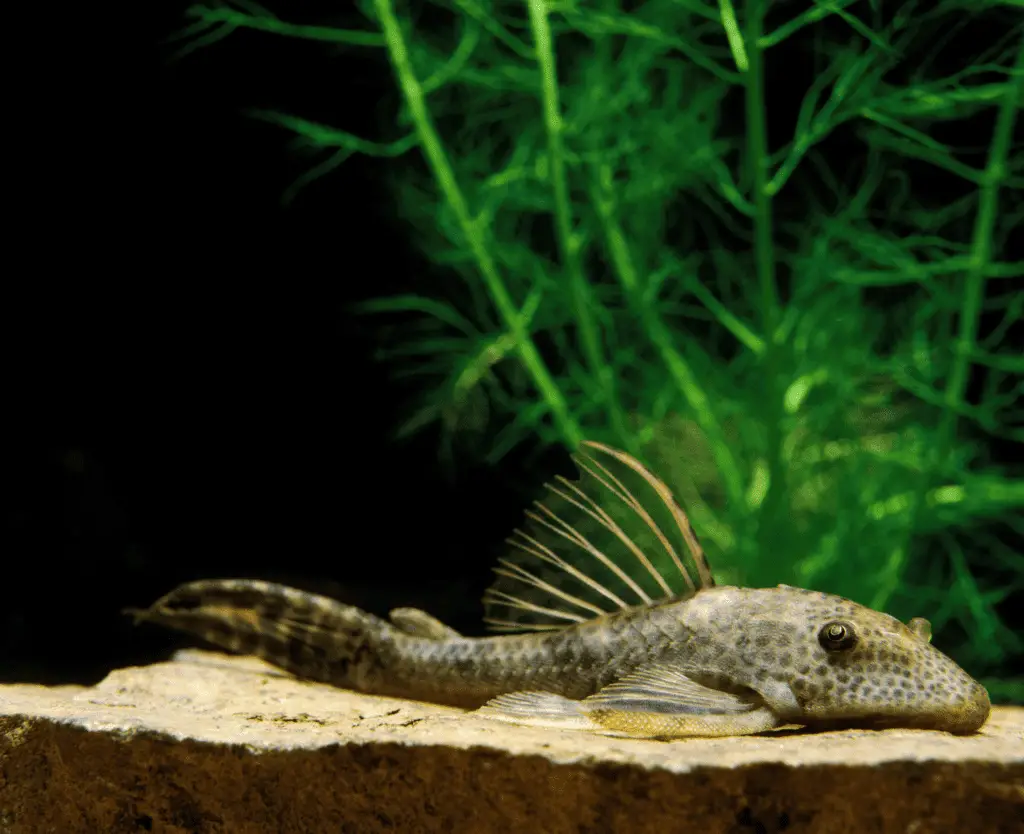
Suitable Tankmates for Plecostomus
Plecostomus is a peaceful species that can coexist with a wide variety of other fish species in the aquarium. They are bottom-dwelling fish that spend much of their time scavenging for food, so it is important to choose tankmates that inhabit different areas of the tank. Here are some species that are suitable tankmates for Plecostomus:
- Angelfish: Angelfish are peaceful and suitable tankmates for Plecostomus. They are mid-dwelling fish that occupy the middle and upper parts of the aquarium.
- Tetras: Tetras are small, peaceful fish that inhabit the middle and upper parts of the aquarium. They come in a variety of colors and make great companions for Plecostomus.
- Guppies: Guppies are small, colorful fish that are easy to care for and suitable for beginners. They are also compatible with Plecostomus.
- Swordtails: Swordtails are another peaceful fish that can coexist with Plecostomus. They are mid-dwelling fish that prefer densely planted aquariums.
- Corydoras: Corydoras are bottom-dwelling fish that are similar in appearance to Plecostomus. They are peaceful and suitable tankmates for Plecostomus.
- Discus: Discus are mid-dwelling fish that come in a variety of colors and patterns. They are peaceful and can coexist with Plecostomus.
It is important to avoid aggressive fish species, such as cichlids and larger catfish, as they may harm or intimidate Plecostomus. Additionally, Plecostomus should not be housed with other Plecostomus species, as they are territorial and may fight with one another. It is important to research each species’ specific needs and compatibility before adding them to the aquarium.
Breeding
The common pleco does not breed in captivity. In the wild, Plecostomus breeds in deep burrows excavated in riverbanks or ponds. The plecos are cavity builders, and a mature female lays about 300 eggs at a time in the nests, with the male guarding the eggs and fry. The eggs generally hatch in a few days, and the fry can be fed with infusoria for the first few days before accepting most commercially available fry foods and baby brine shrimp.
Sexing
Plecostomus fish are difficult to sex. Large adult males possess thickened pectoral fins that turn reddish-pink. Mature or gravid adult females appear thicker when viewed from above.
Availability
The common pleco is typically purchased as a juvenile when it is about 8 cm in length. It is readily available from pet stores and online and is moderately priced. If you’re looking to buy your pleco online from home, you can check online vendors and ask them for details about the common pleco.
You can actually buy live Pleco from Amazon. Here’s our recommended seller (with guaranteed live arrival):
- LIve Arrival Guarantee
- 2 Pack Unsexed Albino Shortfin Pleco 2-4cm
- Attention to Customers! Due to limitations in Amazon's system, sellers cannot initiate contact with customers unless customers have contacted us first. If you have ANY issues or concerns regarding your order, please text us @ 714-253-7174 with your Order# or Order Screen shot. Our customer service team will respond within 24 hrs! Thank you!
Habitat and Distribution
Plecostomus is native to tropical northeastern South America, where it inhabits ponds, streams, and rivers with slow-moving water, sunken driftwood, and plants that provide shelter during the day. In its natural environment, it feeds on algae, aquatic plants, and small crustaceans. The species has been introduced to several countries worldwide, including the United States, where it is considered an invasive species. Plecostomus has been found in several water bodies in Florida and is known to compete with native fish for food and habitat.
Behavior and Characteristics
Plecostomus is an omnivorous, bottom-feeding fish that is most active at night. It has a suction cup-like mouth that it uses to attach itself to surfaces in search of food. Plecostomus is a social fish that can be territorial, especially towards members of its own species. In the wild, they are known for their ability to excavate deep burrows in riverbanks or ponds to create nests for breeding. They have a unique set of physical characteristics, including armored plates that protect them from predators, and they have the ability to regenerate damaged fins.
Health and Disease
Plecostomus is generally a hardy species that is not prone to many diseases if provided with a healthy and suitable environment. However, like all fish, they can be susceptible to fungal and bacterial infections, parasitic infestations, and swim bladder problems. Maintaining good water quality is crucial for their health, and it is recommended to change 30-50% of the tank water each week. A balanced diet that includes algae wafers, sinking pellets, and live foods such as worms and insect larvae is also essential. Signs of illness in Plecostomus include loss of appetite, lethargy, abnormal swimming behavior, and visible signs of infection or inflammation.

Conservation Status
Plecostomus is not currently listed on the IUCN Red List of Threatened Species. However, some species of Plecostomus are considered vulnerable or endangered due to habitat loss, pollution, and overfishing. The aquarium trade has also contributed to the decline of some species, as they are often harvested from the wild to supply the demand for exotic fish in the pet trade. It is important to purchase fish from reputable sources and practice responsible pet ownership to help protect wild populations.
Other Species of Plecostomus
There are over 150 species of Plecostomus, each with its own unique physical characteristics, natural habitat, and suitability for aquariums. Some popular species include the Bristlenose Pleco, Rubber Lipped Pleco, and Clown Pleco. The Bristlenose Pleco is a smaller species that is known for its ability to eat algae, while the Rubber Lipped Pleco is named for its lips, which are covered in small, fleshy projections. The Clown Pleco is a small, peaceful species that is easy to care for and suitable for smaller aquariums. When choosing a Plecostomus for your aquarium, it is important to consider the species’ specific needs and compatibility with other fish in the tank.
Conclusion
Overall, Plecostomus is a popular aquarium fish due to its friendly nature and its ability to clean algae from fish tanks. As an omnivorous bottom-feeder, it should be provided with a varied diet and a suitable aquarium with plenty of swimming space, driftwood, and decor. It is important to maintain the water temperature, pH, and hardness, and to change the water regularly. Plecostomus is a fascinating fish species that can add a unique touch to any aquarium.
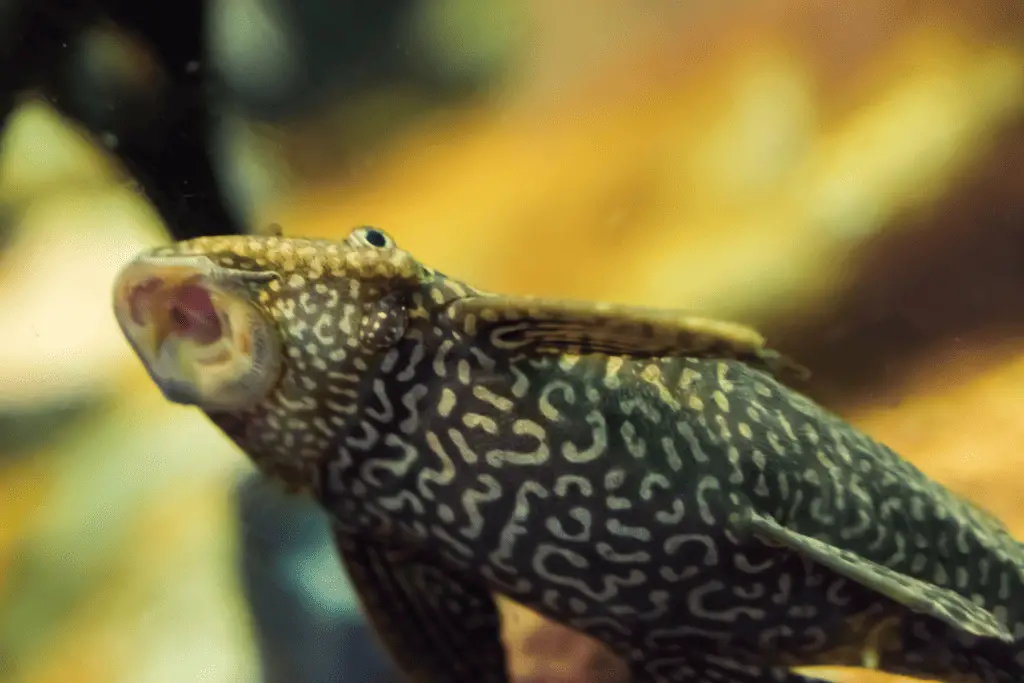
Frequently Asked Questions (FAQ)
Q: What size tank is suitable for Plecostomus?
A: Plecostomus should be kept in aquariums of at least 75 gallons with plenty of swimming space and hiding places.
Q: What should I feed my Plecostomus?
A: Plecostomus is omnivorous and should be provided with a varied diet that includes algae wafers, sinking pellets, and live foods such as worms and insect larvae. They also accept fruits and vegetables such as blanched zucchini and spinach.
Q: Can Plecostomus live with other fish?
A: Yes, Plecostomus is a peaceful fish that can coexist with a variety of other fish species in the aquarium, as long as they are not aggressive and do not compete for the same food.
Q: How often should I change the water in my Plecostomus tank?
A: It is recommended to change 30-50% of the tank water each week to maintain good water quality and keep Plecostomus healthy.
Q: How can I tell if my Plecostomus is male or female?
A: Plecostomus is difficult to sex, but large adult males possess thickened pectoral fins that turn reddish-pink, while mature or gravid adult females appear thicker when viewed from above.
Q: How long do Plecostomus live?
A: Plecostomus can live for up to 15-20 years with proper care.
Q: Are Plecostomus suitable for beginners?
A: Plecostomus is generally suitable for beginners, as they are hardy and easy to care for. However, it is important to research their specific needs and compatibility with other fish before adding them to the aquarium.
Q: Do Plecostomus breed in captivity?
A: Plecostomus does not breed in captivity, but in the wild, they are known for excavating deep burrows in riverbanks or ponds to create nests for breeding.
Q: Are Plecostomus good algae eaters?
A: Yes, Plecostomus is a great algae eater and can help keep your aquarium clean. However, it is important to provide them with a varied diet and not rely solely on algae as their food source.



